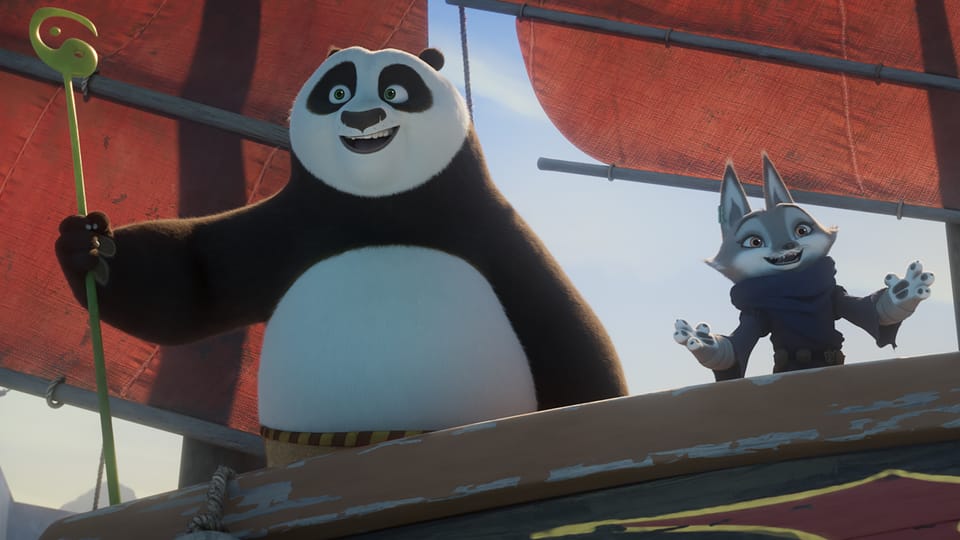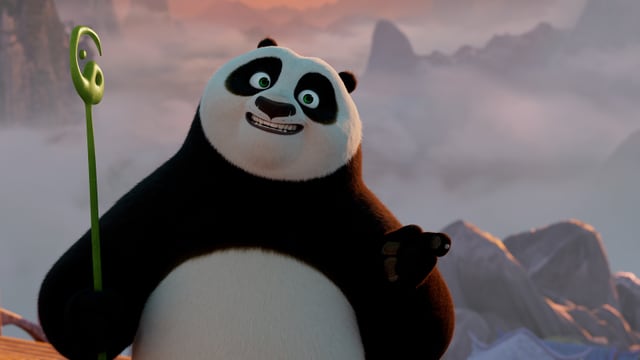Contents
New chapter in a cleverly calculated success story: With “Kung Fu Panda,” Hollywood is successfully pandering to the Chinese market.
The “Kung Fu Panda” film series is one of the most successful animated films. The Fighting Panda can’t keep up with the big Disney hits, but the three previous films were all box office successes. Now the fourth part is coming to Swiss cinemas. Initial figures from the USA indicate that “Kung Fu Panda 4” will also be a success again.
Legend:
Jack Black (right) with an even plusher version of his character Po.
Getty Images/Karwai Tang
This success is no coincidence: the “Kung Fu Panda” films have an amiably clumsy main character, are visually stunning, have verve, humor, heart and a number of Hollywood stars who lend their voices to the characters. For the fourth time, Jack Black voices the main character Po, to whom he is not dissimilar in stature and personality.
Films for the Chinese market
The series with the cuddly warrior is particularly successful because it is also popular outside the USA. During production, the film studio Dreamworks is openly targeting the Chinese market. The story of the panda bear is set in China, filled with Chinese characters and traditions.
Among the prominent voice actors there are always Hollywood stars with Chinese roots such as Lucy Liu, Jackie Chan and James Hong. The latest film features Akwafina and Ke Huy Quan, two of the most successful Asian-American stars of the moment.

Legend:
New character in the Pandaverse: The fox Zhan is dubbed by actress Akwafina.
Dreamworks Animation
The Hollywood stars in China are only needed to drum up advertising. You can’t hear them in Chinese cinemas: the characters there are voiced by Chinese superstars like Huang Bo. This is how you want to win the Chinese audience.
Series, games, amusement parks
Competing for the Chinese market is worth it – China is the world’s largest film market after the USA. The biggest box office successes all come from China itself, but Hollywood also continues to successfully enter the Chinese market. The “Kung Fu Panda” films are a stroke of luck for Hollywood because they are successful in both the USA and China.
Of course we try to get the most out of this success story. In addition to the four films starring Panda Po, there have been three TV series, numerous video games, a gigantic stage show and amusement parks in China and the USA.
Boost for Chinese animated films
The success of the first “Kung Fu Panda” film in 2008 triggered a boom in animated films in China. Since then, Chinese animated films have also celebrated success: in 2015, the Chinese production “Monkey King: Hero Is Back” became the country’s most successful animated film, and in 2019, “Ne Zha,” an animated film, was even the biggest box office hit of the year. The film is now ranked 4th among the most successful films in China.

Legend:
The Chinese box office hit “Ne Zha” tells the story of a guardian deity from Chinese mythology.
IMAGO/Everett Collection
With the increased popularity of animated films, it makes even more sense for Hollywood to produce films suitable for China such as “Kung Fu Panda”. And even though the fourth part of the series had to make do with a significantly lower budget than its predecessors, the series could definitely continue – Dreamworks has already promised two more films.
Cinema release on March 14, 2024.
Radio SRF 3, March 14, 2024, 4:15 p.m.

